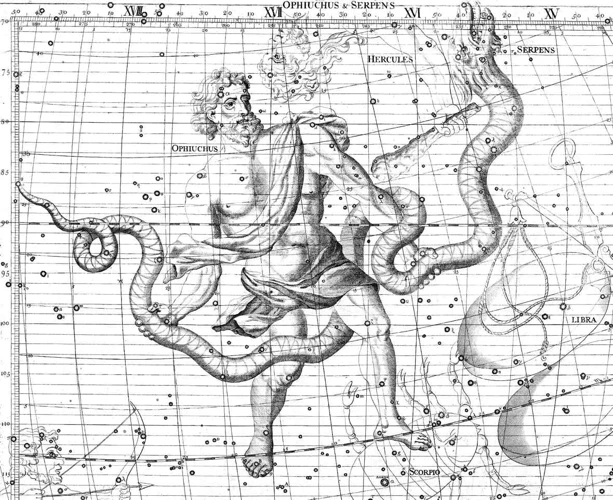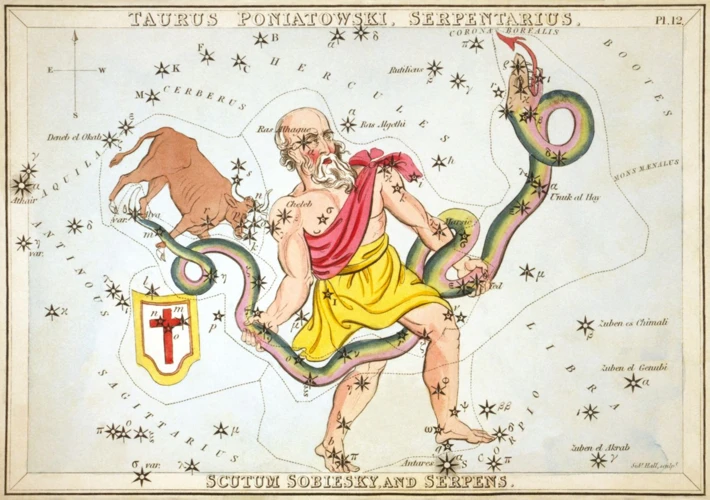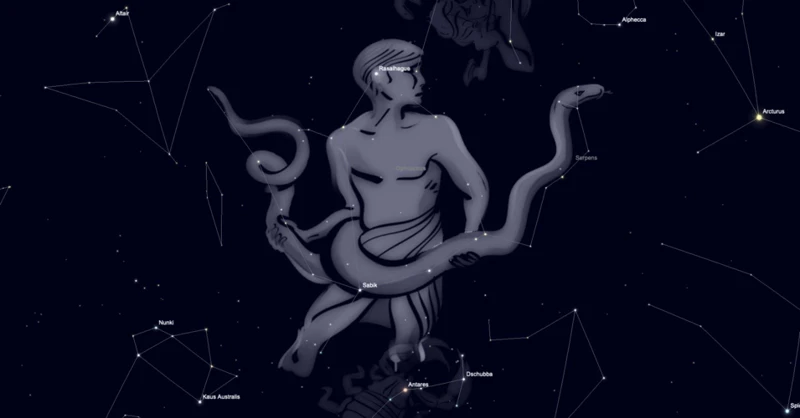The constellation Cygnus holds a profound and fascinating place in both Ancient Greek and Native American mythology. Its significance transcends cultures and has captivated the human imagination for centuries. Cygnus, also known as the Northern Cross, represents a mythical swan and holds various interpretations in different mythologies. In this article, we will explore the rich cultural significance and symbolism associated with Cygnus, delving into its connections to transformation, beauty, celestial navigation, and human aspirations. We will also examine its contemporary importance, from its portrayal in literature and art to its role in scientific discoveries and popular culture. Join us on this cosmic journey as we unravel the enigmatic story of Cygnus and uncover its deep-rooted cultural and spiritual relevance.
Contents
- Ancient Greek Mythology
- Native American Mythology
- Cultural Significance and Symbolism
- Contemporary Importance and Interpretations
- Conclusion
-
Frequently Asked Questions
- 1. How did the constellation Cygnus get its name?
- 2. Can Cygnus only be seen in specific seasons?
- 3. What is the significance of the Northern Cross in Native American mythology?
- 4. Has Cygnus influenced any scientific discoveries?
- 5. Which famous literary works have featured references to Cygnus?
- 6. Is there any merchandise or popular culture references related to Cygnus?
- 7. Is Cygnus visible from all parts of the world?
- 8. Are there any Native American tribes that have specific myths about Cygnus?
- 9. What role does Cygnus play in celestial navigation?
- 10. How does the symbolism of Cygnus reflect human aspirations?
- References
-
Frequently Asked Questions
- What is the cultural significance of the constellation Cygnus in ancient Greek mythology?
- How does the constellation Cygnus relate to the mythical swan in Greek mythology?
- What is the role of Cygnus in the story of Zeus in ancient Greek mythology?
- How does Cygnus feature in the tragic tale of Orpheus in Greek mythology?
- What is the significance of Cygnus in Native American mythology?
- How is Cygnus portrayed in Native American skylore?
- What role does Cygnus play as a spirit guide in Native American mythology?
- What is the significance of the Northern Cross in Native American mythology?
- How does Cygnus symbolize transformation and beauty in its cultural significance?
- How has Cygnus been represented in literature, art, and popular culture?
- References
- Read More
Ancient Greek Mythology

In Ancient Greek mythology, Cygnus holds a prominent place as a constellation with tales of its own. The mythical swan, represented by Cygnus, has various stories associated with it. One such story involves the supreme god Zeus, who transformed himself into a swan to seduce the beautiful Leda. This union resulted in the birth of Helen of Troy, a central figure in the Trojan War and a symbol of immense beauty. Another Greek myth connects Cygnus to the legendary musician Orpheus. As the story goes, after Orpheus’s tragic death, he was placed among the stars, forming the constellation Cygnus. These captivating tales from Ancient Greek mythology highlight the cultural significance and symbolic nature of Cygnus, linking it to themes of beauty, transformation, and celestial beings. This celestial creature lends a touch of poetic mysticism to the realm of Greek mythology and inspires awe and wonder to this day.
The Mythical Swan
In the realm of mythology, the mythical swan holds a prominent place, symbolizing grace, beauty, and transformation. The swan has long been associated with Cygnus, the constellation that portrays a majestic bird soaring across the night sky. In Greek mythology, the story of the swan is intertwined with the tale of Zeus, the king of the gods. According to one version of the story, Zeus transformed himself into a swan to approach and seduce the mortal woman Leda. This union resulted in the birth of Helen of Troy, an iconic figure known for her unparalleled beauty and the catalyst for the Trojan War. The image of the swan represents Zeus’s divine intervention and the extraordinary circumstances that surrounded Helen’s existence. This mythical bird also holds a place in the legend of Orpheus, the renowned musician and poet. After Orpheus’s tragic death, the gods immortalized him by placing him among the stars, forming the constellation Cygnus. The swan in this context represents the transcendent power of music and the eternal legacy of artistic expression. The myth of the swan in both of these Greek legends showcases its significance as a symbol of beauty, transformation, and the connection between the mortal and divine realms. Its graceful presence in the night sky continues to inspire awe and wonder, lending an air of enchantment to the mythical tapestry of Ancient Greek mythology.
Zeus and Cygnus
In the realm of Ancient Greek mythology, an intriguing tale connects the mighty god Zeus to the constellation Cygnus. According to the myth, Zeus, the supreme ruler of the gods, took the form of a majestic swan to approach and seduce the mortal woman, Leda. Their union resulted in the birth of Helen of Troy, whose incomparable beauty would become the catalyst for the legendary Trojan War. The story of Zeus and Cygnus showcases the transformative power of the gods and their ability to shape-shift into various forms, blurring the lines between divine and mortal realms. This myth also highlights the theme of beauty as a force capable of altering the course of history, with Helen serving as a symbol of allure and allure throughout ancient Greece. The celestial presence of Cygnus, symbolizing this divine union, carries a profound significance in Greek mythology, emphasizing the divine influence in mortal affairs and the eternal nature of beauty.
Orpheus and Cygnus
In the realm of Ancient Greek mythology, the connection between Orpheus and Cygnus is a tale that brings together the power of music and the cosmos. Orpheus, the legendary musician and poet, possessed an incredible gift for enchanting both humans and divine beings with his melodious tunes. This tale takes a tragic turn when Orpheus’s beloved wife, Eurydice, is fatally bitten by a snake and passes away. Overwhelmed by grief, Orpheus journeys to the Underworld to plead with Hades for her return. It is during his journey to the realm of the dead that Cygnus comes into the picture. As Orpheus plays his lyre and sings mournful songs, the swans on the riverbank are so moved that they gather around him in mourning. The music of Orpheus captivates the swans, known for their grace and elegance, and they form the constellation Cygnus as a tribute to his extraordinary talent and sorrowful journey. This connection between Orpheus and Cygnus highlights the profound impact of music as a universal language and its ability to transcend the boundaries of life and death. It is a testament to the enduring power of art and the interconnectedness of the celestial and terrestrial realms.
Native American Mythology

Native American mythology also holds a significant place for the constellation Cygnus. In Native American skylore, Cygnus is often associated with powerful spiritual symbolism. Many tribes see the constellation as a representation of a celestial bird, a messenger between the earthly realm and the spirit world. The Native Americans also identify Cygnus as a spirit guide, offering guidance and protection to those who seek its wisdom. Additionally, the arrangement of the stars in Cygnus forms a distinct pattern known as the Northern Cross, which signifies the intersection of the physical and spiritual realms. This sacred symbol has been revered by indigenous cultures, reflecting their deep-rooted connection to nature, cosmology, and the unseen forces that shape their lives.
Cygnus in Native American Skylore
Native American cultures also have their own rich skylore surrounding the constellation Cygnus. Many tribes, such as the Ojibwe, Lakota, and Navajo, have myths and legends that involve Cygnus and its position in the night sky. In Ojibwe mythology, Cygnus is known as the “Northern Lacrosse Player” and is associated with a traditional sport played by the tribes. The Ojibwe believe that the stars in the constellation are the spirits of their ancestors who come to watch over and guide them. Similarly, in Lakota mythology, Cygnus is seen as a celestial bird and is connected to stories of creation, spirituality, and the afterlife. For the Navajo people, Cygnus is believed to be the pathway between the Earth and the Spirit World. They associate it with the Milky Way and view it as a significant symbol of cosmic connection. These diverse Native American interpretations of Cygnus demonstrate the cultural significance of the constellation in different tribes and further emphasize its role as a celestial guide and guardian in Native American skylore.
Cygnus as a Spirit Guide
Cygnus holds a significant role as a spirit guide in Native American mythology. Native American cultures associate the celestial bird with spiritual guidance and transformation. The Native American Skylore tells stories of how Cygnus serves as a guiding force for individuals seeking inner strength and enlightenment. Just as the swan gracefully glides through the skies, it symbolizes the ability to navigate through life’s challenges with grace and resilience. The constellation’s prominent position in the night sky, forming the famous Northern Cross, further emphasizes its spiritual importance. For many Native American tribes, the Northern Cross represents a divine pathway, guiding souls on their journey to the afterlife. The symbolism of Cygnus as a spirit guide resonates with the belief in the interconnectedness of all beings and the continuous cycle of life and rebirth. This connection to spiritual guidance and transformation makes Cygnus an essential figure in Native American mythologies, offering solace and guidance to those who seek a deeper understanding of themselves and the world around them.
The Northern Cross
The Northern Cross is a prominent feature within the Cygnus constellation that has profound cultural and symbolic significance. Resembling a cross shape, it is formed by the arrangement of stars in Cygnus and has captivated the imaginations of various civilizations throughout history. In Native American skylore, the Northern Cross represents a bridge between the earthly and spiritual realms, serving as a navigational tool and a guide for safe travels. Many Native American tribes associate the Northern Cross with the concept of the “Path of Souls,” a celestial pathway that leads to the afterlife. This symbolism reflects the belief that the constellation serves as a guiding light for the souls of the departed. The Northern Cross also served as an important marker for seasonal observations and celestial navigation, helping ancient civilizations track the changing of seasons and determine optimal times for planting and harvesting crops. Its celestial prominence made it a reliable seasonal marker for both agricultural and cultural purposes. Today, the Northern Cross continues to be celebrated for its enduring cultural significance and its role as a link between the earthly and cosmic realms. Its cosmic presence not only offers a glimpse into ancient cultural practices and beliefs but also serves as a reminder of the interconnectedness of humanity with the vastness of the universe.
Cultural Significance and Symbolism

The cultural significance and symbolism of the constellation Cygnus are deeply rooted in human history and belief systems. Across different cultures, Cygnus represents transformation, beauty, and the celestial realm. It serves as a reflection of our perennial desire for growth and metamorphosis. In addition to its mythical associations, Cygnus also serves as a celestial guide for navigation and seasonal markers. Its presence in the night sky aids travelers, ensuring safe passage across vast landscapes. These symbolic interpretations of Cygnus are not limited to ancient times but continue to inspire contemporary artists and writers. It is through their interpretations that we continue to explore and appreciate the profound cultural and spiritual significance of Cygnus in a modern context. This enduring symbolism bridges the gap between ancient mythology and our present-day understanding of the cosmos, enriching our collective imagination and sense of wonder.
Connection to Transformation and Beauty
Cygnus, the constellation of the mythical swan, holds a deep connection to themes of transformation and beauty. In both Ancient Greek and Native American cultures, the swan has been revered for its graceful and elegant appearance, symbolizing purity and transcendence. In Greek mythology, the story of Zeus transforming into a swan to seduce Leda highlights the transformative power of love and the beauty that can arise from it. Similarly, in Native American skylore, Cygnus is associated with stories of transformation, often representing a bridge between different realms or states of being. The swan’s majestic flight through the heavens reflects the notion of transcending earthly limitations and reaching for the sublime. Its pristine white feathers and graceful movements have long been associated with notions of purity and perfection. The presence of Cygnus in the night sky reminds us of the inherent beauty and transformative potential that exists within the universe and within ourselves. It encourages us to embrace the power of change and find beauty in the process of transformation. Whether it is through the stories of Greek mythology or the spiritual teachings of Native American cultures, the connection between Cygnus, transformation, and beauty is a testament to the enduring human fascination with the celestial and the profound impact it has on our understanding of ourselves and the world around us.
Reflection of Human Aspirations
In mythology, the constellation Cygnus serves as a reflection of human aspirations. Its ethereal presence in the night sky has inspired countless individuals to strive for greatness and tap into their own potential. The graceful swan, symbolized by Cygnus, embodies elegance, beauty, and the pursuit of perfection. This celestial creature represents the yearning for personal growth and the desire to transcend earthly limitations. In Greek mythology, the story of Hercules, a demi-god known for his heroic feats, exemplifies the human quest for greatness. Just as Hercules faced trials and challenges, individuals are motivated by the constellation Cygnus to overcome obstacles and push their boundaries. Additionally, the Aztecs, known for their cultural achievements, viewed the stars as celestial guides, providing direction and inspiration for realizing their ambitions. The symbolic nature of Cygnus reminds us that we are capable of reaching for the stars, tapping into our inner strength, and striving for our dreams. It serves as a reminder that human aspirations are limitless and that the journey towards self-actualization is as infinite as the cosmos itself.
Celestial navigation and seasonal markers have long been important tools for civilizations to track time, navigate the vast expanse of the night sky, and mark the changing seasons. In the case of the constellation Cygnus, it played a significant role in celestial navigation due to its distinctive shape known as the Northern Cross. This distinctive configuration of stars made it an easily identifiable and reliable marker for ancient seafarers and travelers, aiding them in finding their way across vast distances. The presence of Cygnus in the night sky also served as a crucial seasonal marker for ancient cultures, indicating the arrival of different seasons and guiding agricultural practices. For example, its appearance in the sky during the fall equinox signaled the changing of seasons and the preparation for winter. In Native American mythology, its position in the sky was associated with the migrating patterns of various bird species, acting as a guide for navigation and signaling the arrival of different seasons. This intersection of celestial navigation and seasonal markers underscores the practical and cultural significance of Cygnus in ancient civilizations’ lives, shaping their understanding of time, nature, and their place in the cosmos.
Contemporary Importance and Interpretations

Cygnus continues to hold significance in contemporary times, leaving its mark on various forms of art, literature, and scientific discoveries. In the realm of literature and art, Cygnus is often depicted as a symbol of beauty, grace, and transcendence. Its elegant form and celestial allure have inspired countless artists, who have incorporated the constellation into their works as a representation of ethereal beauty and the human longing for transformation. Scientifically, Cygnus has played a crucial role in our understanding of the universe. Its position within the Milky Way galaxy allows astronomers to study various celestial phenomena, including star formation, supernovae, and black holes. Cygnus X-1, a powerful X-ray source located within the constellation, has provided valuable insights into the nature of binary star systems and the presence of black holes. This interplay between culture, art, and science highlights the enduring importance and multifaceted interpretations of the constellation Cygnus in contemporary times.
Cygnus in Literature and Art
Cygnus has left its mesmerizing imprint on the world of literature and art, captivating the creative minds of countless artists and writers throughout history. In literature, the constellation often symbolizes beauty, grace, and poetic inspiration. One notable example is the famous ballet “Swan Lake” by Pyotr Ilyich Tchaikovsky, where the swan-like qualities of Cygnus are brought to life through graceful movements and ethereal storytelling. Additionally, the poem “The Wild Swans at Coole” by W.B. Yeats draws upon the imagery of swans in flight, perhaps inspired by the celestial display of Cygnus in the night sky. In the realm of art, Cygnus has been depicted in various forms, from ancient Greek pottery to Renaissance paintings. The painting “Leda and the Swan” by Leonardo da Vinci portrays the Greek myth of Zeus and Leda, symbolizing the transformative power of love. Cygnus has found its place in modern science fiction and fantasy literature, where it often represents a gateway to other realms or a symbol of transcendence. The enduring presence of Cygnus in literature and art showcases its timeless appeal and its ability to inspire and spark the imagination of both creators and audience alike.
Scientific Discoveries and Astronomical Insights
Scientific discoveries and astronomical insights have shed new light on the constellation Cygnus, deepening our understanding of its celestial significance. Modern astronomers have uncovered remarkable details about this constellation, unveiling its role in the formation and evolution of stars. Cygnus is a region rich with stellar nurseries, where massive stars are born. Through the study of Cygnus, scientists have been able to observe and analyze the birth and death processes of stars, providing invaluable insights into the life cycle of these cosmic entities. Additionally, Cygnus has served as a key reference point for astronomers in understanding the structure and dynamics of our own galaxy, the Milky Way. Its position within the northern hemisphere allows for detailed observations and measurements, contributing to our broader understanding of the universe. The scientific exploration of Cygnus has not only expanded our knowledge of the cosmos but has also reignited a sense of wonder and curiosity about our place in the vast expanse of space. By unraveling the mysteries of Cygnus, scientists continue to make groundbreaking discoveries that enrich our understanding of the universe and our place in it.
Cygnus in Popular Culture
Cygnus has made its presence felt in popular culture, permeating various forms of art, literature, and entertainment. Its striking appearance as the Northern Cross constellation has inspired artists and writers to incorporate it into their works. In literature, Cygnus often symbolizes beauty, grace, and transcendence. It has been featured in books such as “Cygnus: A Nature Poem” by Esther Morgan and “The Cygnus Mystery: Unlocking the Ancient Secret of Life’s Origins in the Cosmos” by Andrew Collins. In music, the atmospheric soundscapes of the band “Cygnus” created a sonic journey reminiscent of the constellation’s ethereal presence. Cygnus has also made notable appearances in film, including the classic sci-fi movie “Contact” directed by Robert Zemeckis, where it serves as a key reference point for an extraterrestrial civilization. The cultural influence of Cygnus extends beyond traditional art forms, as it has found its place in video games, with references in popular titles such as “Destiny” and “No Man’s Sky.” This wide range of representations in popular culture demonstrates the enduring allure and adaptability of Cygnus as a source of inspiration in the modern world.
Conclusion

In conclusion, the constellation Cygnus holds immense cultural significance and symbolism in both Ancient Greek and Native American mythology. Its portrayal as the mythical swan in Greek mythology highlights themes of beauty, transformation, and divine connections. In Native American skylore, Cygnus takes on various roles such as a spirit guide and the formation of the Northern Cross, serving as a marker for seasonal changes. The cultural importance of Cygnus extends beyond ancient mythology and continues to inspire contemporary art, literature, and popular culture. From paintings to poetry, Cygnus has been depicted as a muse for artistic expression and a source of celestial inspiration. Scientific discoveries and astronomical insights have further deepened our understanding of the constellation, revealing its astronomical significance. The captivating stories associated with Cygnus and its enduring presence in various cultures highlight its timeless and universal appeal. Whether viewed through the lens of mythology or the wonders of the night sky, the constellation Cygnus remains a source of fascination, guiding us to explore the depths of human imagination and our connection to the cosmos.
Frequently Asked Questions

1. How did the constellation Cygnus get its name?
The name “Cygnus” comes from the Latin word for “swan.” It was given this name due to its resemblance to a graceful swan in the night sky.
2. Can Cygnus only be seen in specific seasons?
No, Cygnus is visible throughout the year in different seasons. In the Northern Hemisphere, it can be seen most prominently during the summer months, while in the Southern Hemisphere, it is visible during the winter.
3. What is the significance of the Northern Cross in Native American mythology?
In Native American Skylore, the Northern Cross formation created by the stars in the Cygnus constellation holds cultural and symbolic importance. It represents a pathway for spirits to travel between the earthly and spiritual realms.
4. Has Cygnus influenced any scientific discoveries?
Yes, the study of Cygnus has led to numerous scientific discoveries. It has been an area of interest for astronomers and astrophysicists, providing insights into stellar evolution, star formation, and the dynamics of galaxy clusters.
5. Which famous literary works have featured references to Cygnus?
Cygnus has been referenced in various literary works throughout history. Notable examples include Dante Alighieri’s “Divine Comedy,” where it is mentioned in the Paradiso, and John Milton’s “Paradise Lost,” where it is likened to the fallen angel Lucifer.
Absolutely! Cygnus has made its way into popular culture through various mediums. It has been featured in movies, such as “Interstellar,” and has inspired musical compositions, artwork, and even fashion designs.
7. Is Cygnus visible from all parts of the world?
Yes, with its location in the northern celestial hemisphere, Cygnus can be seen from most regions of the world. However, its visibility may vary depending on the viewer’s latitude and the time of year.
8. Are there any Native American tribes that have specific myths about Cygnus?
Yes, several Native American tribes have specific myths and legends associated with Cygnus. For example, the Lakota tribe sees Cygnus as a powerful spirit guide, while the Hopi tribe connects it to their creation stories.
Cygnus has historically been used as a navigational aid by sailors and travelers. Its position in the sky has helped in determining cardinal directions, especially in the Northern Hemisphere, where it can act as a reliable marker for finding north.
10. How does the symbolism of Cygnus reflect human aspirations?
The symbolism of Cygnus, with its association with beauty, transformation, and celestial beings, reflects human aspirations for transcendence, grace, and connection with the divine. It serves as a reminder of our eternal quest for spiritual growth and transformation.
References
Frequently Asked Questions

What is the cultural significance of the constellation Cygnus in ancient Greek mythology?
The constellation Cygnus holds great cultural significance in ancient Greek mythology as it is associated with mythical stories and powerful deities. It represents the mythical swan and is closely linked to Zeus, the king of the gods, and the tragic tale of Orpheus.
How does the constellation Cygnus relate to the mythical swan in Greek mythology?
Cygnus is believed to represent the mythical swan in Greek mythology. According to the myth, the swan was transformed into stars and immortalized in the night sky as a tribute to its beauty and grace.
What is the role of Cygnus in the story of Zeus in ancient Greek mythology?
In ancient Greek mythology, Cygnus played a significant role in the story of Zeus. It is said that Zeus transformed himself into a swan to approach his lover, Leda, resulting in the birth of the famous Gemini twins, Castor and Pollux, as well as Helen of Troy.
How does Cygnus feature in the tragic tale of Orpheus in Greek mythology?
The constellation Cygnus is linked to the tragic tale of Orpheus in Greek mythology. When Orpheus was killed by the Maenads, his lyre was thrown into the river. It was then transformed into the constellation Cygnus, forever immortalizing the power and beauty of Orpheus’ music.
What is the significance of Cygnus in Native American mythology?
In Native American mythology, Cygnus holds a special significance. It is often associated with stories of creation and is considered a spirit guide that assists in guiding individuals on their life paths and connecting them with the spiritual realm.
How is Cygnus portrayed in Native American skylore?
In Native American skylore, Cygnus is often portrayed as a powerful and majestic bird, tying it closely to the mythical swan in Greek mythology. It is seen as a symbol of grace, beauty, and harmony with the spiritual and natural world.
What role does Cygnus play as a spirit guide in Native American mythology?
Cygnus is believed to be a spirit guide in Native American mythology, guiding individuals on their spiritual journeys and helping them connect with their inner selves. It is associated with introspection, self-discovery, and finding one’s purpose in life.
What is the significance of the Northern Cross in Native American mythology?
In Native American mythology, the Northern Cross is a prominent feature of the Cygnus constellation. It is seen as a symbol of balance, representing the intersection of the physical and spiritual realms, and guiding individuals towards harmony in their lives.
How does Cygnus symbolize transformation and beauty in its cultural significance?
Cygnus symbolizes transformation and beauty in both ancient Greek and Native American mythology. Its association with the mythical swan highlights the transformative power of love and nature, while its portrayal as a spirit guide represents the beauty and harmony found within oneself and the world around.
How has Cygnus been represented in literature, art, and popular culture?
Cygnus has left a lasting impact on literature, art, and popular culture. It has been featured in numerous literary works and paintings, often embodying themes of transformation, beauty, and spirituality. Additionally, its significance in astronomy and scientific discoveries has sparked interest and fascination among the general public, further cementing its place in popular culture.







